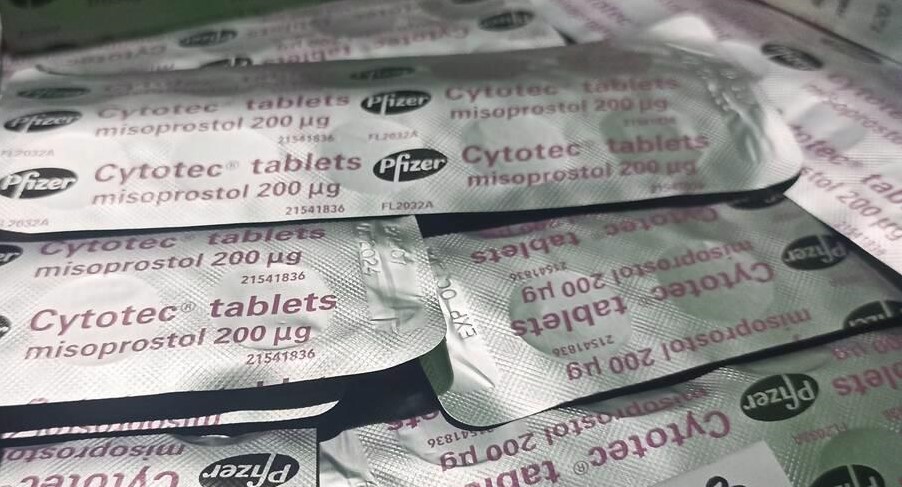How To Use Misoprostol Vaginally

Misoprostol is a medication that is used for a variety of purposes, including the prevention of stomach ulcers, the treatment of postpartum hemorrhage, and as an abortifacient medication. In the context of abortion, Misoprostol is often used in combination with another medication, Mifepristone, to terminate an early pregnancy.
Misoprostol works by causing contractions of the uterus, which can lead to the expulsion of the contents of the uterus, including the embryo or fetus. When used in combination with Mifepristone, Misoprostol can be up to 95% effective in inducing a complete abortion. It is a safe and effective medication when used correctly and under medical supervision.
The use of Misoprostol in abortion is especially important in settings where safe and legal abortion services are not readily available. Unsafe abortions are a significant public health issue and can lead to serious complications, including infection, injury, and death. In these settings, Misoprostol can be a life-saving medication, providing women with a safe and effective option for terminating an unwanted pregnancy.
However, it’s important to note that the use of Misoprostol for abortion should always be done under the supervision of a qualified healthcare provider. Self-administration of Misoprostol without medical supervision can lead to serious complications and should be avoided. In addition, Misoprostol should not be used in cases of ectopic pregnancy or if there is a risk of severe allergic reaction to the medication.
Misoprostol is an important medication in the context of abortion, providing women with a safe and effective option for terminating an early pregnancy. Its use should always be done under the supervision of a qualified healthcare provider, and access to safe and legal abortion services should be a fundamental right for all women.
How many women use Misoprostol to terminate pregnancy?
The Guttmacher Institute, a leading reproductive health research organization, estimates that in Latin America and the Caribbean, where access to safe abortion services is limited, up to 50% of all abortions are self-induced, with Misoprostol being the most commonly used medication. Similarly, a study conducted in Nigeria found that among women seeking abortions, 43% reported using Misoprostol, either alone or in combination with other medications.
According to the World Health Organization (WHO), an estimated 25 million unsafe abortions occur each year, many of which are self-induced. Misoprostol is often used in these cases because it is affordable, widely available, and can be used safely and effectively when used correctly.

How To Use Misoprostol Vaginally
If you are considering using Misoprostol vaginally for medical purposes, such as abortion, it’s important to do so safely and under the guidance of a qualified healthcare provider. Here is a step-by-step guide on how to use Misoprostol vaginally:
Step 1: Confirm Pregnancy
Before using Misoprostol, it’s important to confirm that you are pregnant. You can do this by taking a pregnancy test or consulting a healthcare provider.
Step 2: Obtain Misoprostol
Misoprostol can be obtained with a prescription from a healthcare provider or purchased over-the-counter in some countries. It’s important to ensure that you are obtaining the medication from a reputable source.
Step 3: Prepare for Administration
To prepare for the administration of Misoprostol, you will need to empty your bladder and wash your hands thoroughly. You should also lay down on your back with your knees bent and your feet flat on the ground.
Step 4: Insert the Medication
Misoprostol can be inserted into the vagina using the fingers or a plastic applicator. The recommended dose is typically 800 mcg, which is usually four 200 mcg tablets. You should insert the tablets as far up into the vagina as possible, ensuring that they are in a comfortable position.
Step 5: Remain Lying Down
After inserting the medication, it’s important to remain lying down for at least 30 minutes to ensure that the medication is absorbed. You may experience mild cramping and bleeding, which is a normal part of the abortion process.
Step 6: Follow-up Care
After using Misoprostol, it’s important to follow-up with a healthcare provider to ensure that the abortion is complete and there are no complications. Your healthcare provider may recommend additional testing or medication to ensure your health and well-being.
In conclusion, Misoprostol can be an effective and safe medication when used correctly. If you are considering using Misoprostol to induce abortion, it’s important to ensure that you obtain the medication from a reputable source and follow the instructions carefully. If you have any questions or concerns about the use of Misoprostol, you should consult a healthcare provider.
What side effects should I expect after using misoprostol vaginally?
Misoprostol is a medication that can cause a variety of side effects, especially when used for medical purposes such as abortion. Here are some of the most common side effects that you might experience after using Misoprostol vaginally:
1. Cramping: Misoprostol can cause uterine contractions and cramping, which can range from mild to severe. This is a normal part of the medication’s effect on the body and is usually temporary.
2. Bleeding: Misoprostol can cause vaginal bleeding, which can be heavy and may last for several hours or days. This is also a normal part of the medication’s effect on the body and is usually temporary.
3. Nausea and vomiting: Some people may experience nausea and vomiting after using Misoprostol vaginally. This can usually be managed with over-the-counter medications or by drinking plenty of fluids.
4. Diarrhea: Misoprostol can cause diarrhea, which can be mild or severe. This is usually temporary and can be managed with over-the-counter medications or by drinking plenty of fluids.
5. Headache: Some people may experience a headache after using Misoprostol vaginally. This can usually be managed with over-the-counter pain relievers.
6. Fever: Misoprostol can cause a mild fever, which is usually temporary and can be managed with over-the-counter medications.
It’s important to note that some people may experience more severe or uncommon side effects after using Misoprostol vaginally. If you experience any unusual or severe symptoms, such as severe pain, heavy bleeding, or signs of infection, it’s important to seek medical attention right away.
Will misoprostol interact with other medications when used vaginally?
No matter the mode of administration, misoprostol can interact with a variety of medications, which is why it’s important to tell your healthcare provider about all medications you are taking before using Misoprostol vaginally. This includes prescription medications, over-the-counter medications, and herbal supplements.
Here are some examples of medications that may interact with Misoprostol:
1. Antacids: Antacids are medications that are used to treat heartburn and indigestion. They work by neutralizing stomach acid, but they can also decrease the effectiveness of Misoprostol. This is because Misoprostol works by increasing the production of stomach acid, which can help to protect the stomach lining from damage. If you need to take an antacid, it’s important to wait at least 30 minutes after taking Misoprostol before using the antacid.
2. Nonsteroidal anti-inflammatory drugs (NSAIDs): NSAIDs are medications that are used to treat pain and inflammation, such as ibuprofen and aspirin. They can increase the risk of stomach ulcers and bleeding when used with Misoprostol. This is because Misoprostol can increase the production of stomach acid, which can exacerbate the stomach irritation caused by NSAIDs. If you need to take an NSAID, it’s important to talk to your healthcare provider about the risks and benefits, and to take the lowest effective dose for the shortest duration possible.
3. Blood thinners: Blood thinners, such as warfarin, can increase the risk of bleeding when used with Misoprostol. This is because Misoprostol can also increase the risk of bleeding, particularly if it is used for medical purposes such as abortion. If you are taking a blood thinner, it’s important to talk to your healthcare provider about the risks and benefits of using Misoprostol vaginally.
4. Corticosteroids: Corticosteroids are medications that are used to treat a variety of conditions, such as asthma and arthritis. They can increase the risk of stomach ulcers and bleeding when used with Misoprostol. This is because corticosteroids can increase the production of stomach acid, which can exacerbate the stomach irritation caused by Misoprostol.
5. Other uterine medications: Misoprostol should not be used with other medications that affect the uterus, such as oxytocin or prostaglandins. This is because these medications can increase the risk of uterine rupture and bleeding. If you are using other uterine medications, it’s important to talk to your healthcare provider about the risks and benefits of using Misoprostol vaginally.
Overall, it’s important to talk to your healthcare provider about any medications you are taking before using Misoprostol vaginally. They can help determine if there are any potential interactions and provide guidance on how to safely use the medication.





